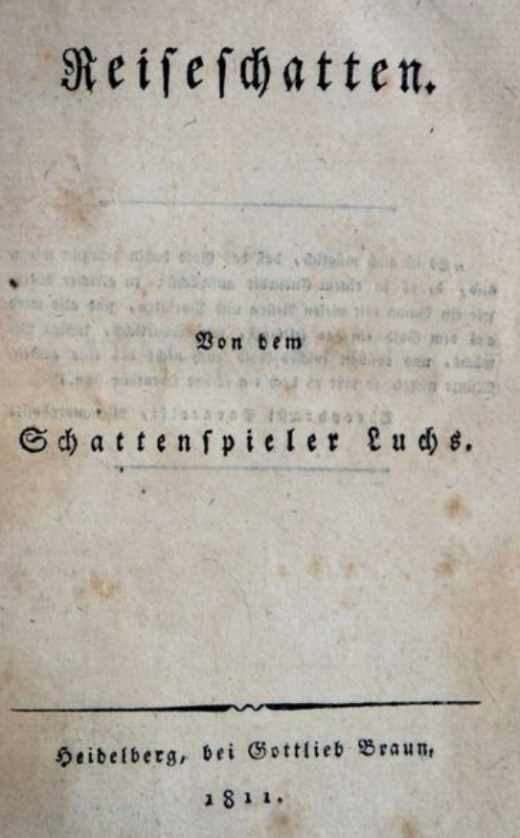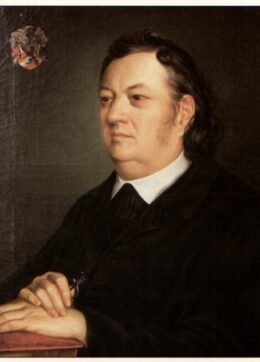
Printed
15 pages
Author(s)
König Eginhard
Justinus Kerner’s taste and writings were shaped by Des Knaben Wunderhorn (The Boy’s Magic Horn) and by his friendship with Ludwig Uhland, a poet and ardent supporter of folk poetry. During a training trip in Hamburg and Vienna in 1808-1809, at the end of which he published his poetic and autobiographical travelogue Reiseschatten (Travelling Shadows, 1811), Justinus Kerner attended puppet shows and wrote “Chinese shadow puppetry” plays. His correspondence with Ludwig Uhland reveals original thoughts about shadow theatre; as it is suited to show imaginative images and a world less bound by the limiting laws of physics, they saw shadow puppetry as an alluring alternative to realistic representations.
König Eginhard (King Eginhard) was placed at the end of the first chapter of Reiseschatten: the narrator has just left Hamburg and tries to entertain his fellow travellers by setting a humble shadow theatre in the passenger compartment of the car; there, he plays a fantasy entitled “König Eginhard”.
The title of the play features in a brochure of the Schwabinger Schattenspiele (Munich) which listed the plays of the 1907-1908 season. But no programme, no poster and no stage equipment (figures, scenery) confirm that the performance was really put on. However, it is still significant that two plays by Justinus Kerner were announced for this first season: indeed, it connects the project of Alexander von Bernus, the main founder and architect of the Schwabinger Schattenspiele, to Swabian romantics such as Ludwig Uhland, and so to their vision of shadow puppetry—as a medium which can let imagination soar.
A king follows the advice of a diabolical courtier
The daughter of the emperor Otto bemoans her life as a nun in a convent. In contrast with her, the king of Bohemia, Eginhard, would like to live a secluded life in the forest but the private tutor Dietwaldus manages to arouse his desire for Otto’s beautiful daughter; he also offers to help her escape. A series of metamorphoses blurs the characters’ identities; the nun and Dietwaldus go back between their original form and that of diabolical beings. In the convent, the nun yields to the request of Dietwaldus, who has transformed into a nun himself: she agrees to flee. In his room, the emperor Otto curses his daughter. A magical mirror shows her wedding at the court of Bohemia. The emperor’s death threats reach Eginhard; he regrets having followed Dietwaldus’s advice. The advisor stabs himself with his sword; a devil appears and carries his corpse.
The king Eginhard and his wife now live hidden in the Bohemian Forest. The emperor has sent his army to look for them, destroying every neighbouring village. All his men are dead, save for a squire with whom he travels through the woods; they narrowly escape the wolves. They reach the castle in which Eginhard’s court has taken refuge, and go to sleep in a room quickly prepared for them before they arrived. Everyone spies on them through a magical mirror which has been transformed into a window. The king Eginhard and his wife hear the emperor expressing regret. They then walk into the room and ask to be whipped to be forgiven. Moved, the emperor calls for the peace and unity of the kingdom. The heads of the people gathered transform into the heads of animals as well as of poets and philosophers known for their antagonisms and bad blood…
Publications and translations
Justinus Kerner, Reiseschatten: von dem Schattenspieler Luchs, Heidelberg, Braun, 1811.
